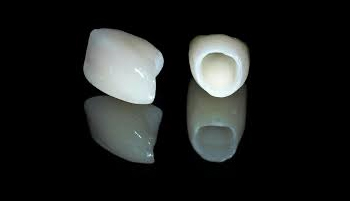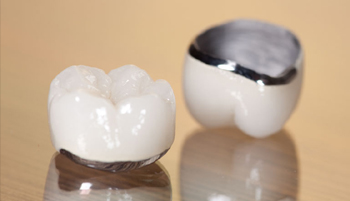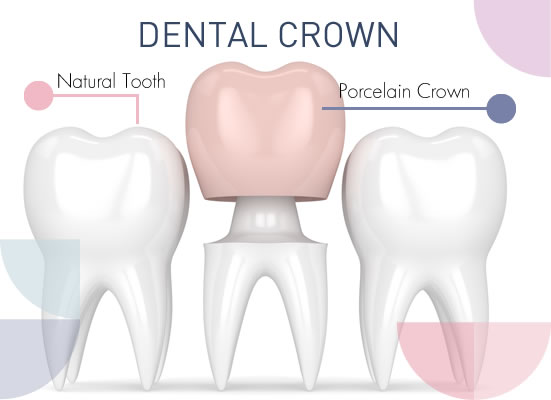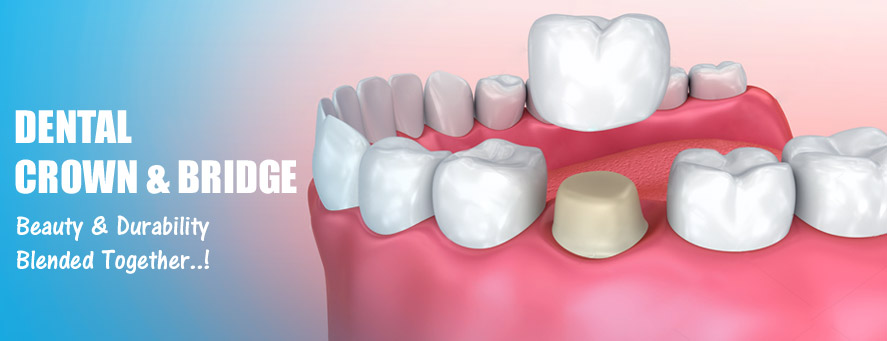Dental Crown
A crown is a tooth shaped cap that is fixed over the tooth to resize and reshape and also improve the appearance of the teeth. Dental crowns are a secure way to fill gaps and help restore your smile if you have missing or damaged teeth. A crown can also help you bite and chew better, which can positively impact other systems in your body, such as a your digestive system.
A Crown can be used in the following situations:
- If the teeth is half broken and weak ,To restore that teeth use the crown.
- It also Cover Dental Implants.
- It also cover discoloured and misshapen teeth.
- It is use to change the cosmetic appearance.
- It also used to cover the missing tooth.
- If the cavity is there, use the crown to cover it.
- If had a root canal treatment, the crown will protect.
Caring for your teeth:
- To prevent damage to a crown, there are a few things you can do:
- Brush twice a day and floss once a day to remove plaque, a sticky film of bacteria.
- Avoid chewing hard foods, ice or other hard objects, such as pencils. This is especially important for tooth-colored crowns.
- Be sure to see your dentist for regular Checking and professional teeth cleanings.
- Quit smoking. Smoking increases your risk for gum disease.
- Eat a well-balanced diet.
Procedure for Dental Crowns Treatment
The course of treatment described here is one of several options available at our dental clinic. Consult your dentist to find out what the best solution is for you, given your specific condition.
First evaluation and crowns tooth preparation
- Local anesthesia is first administered at the region for crown tooth preparation
- The natural tooth is reshaped to receive the new dental crown
- Records are taken and approved with the patient to determine the color, bite, length and shape of the crown
- An impression is taken for a replica model of the teeth
- This model is sent to a lab where the individual personal crown is fabricated
- A temporary crown is placed on whilst the permanent crown is made
- Fitting of crowns on delivery
- The temporary crown is removed
- The permanent crown is fitted and cemented into place on the teeth
- A quality assurance check is done for any re-adjustments or re-works of the dental crowns
- Care of crowns
- Brush and floss the crowns as recommended by your dentist or dental hygienist.
Crowns are the different types.
Crowns are Both Temporary or Permanent. temporary crowns are made of an acrylic-based material or stainless steel and can be used as a temporary restoration until a permanent crown is made in lab.
Metal free ceramic crown
These dental crowns are very common and provide optimum aesthetic results. They look natural and can be very aesthetic. The new metal-free crowns eliminate the ugly black line you may have seen next to the gum line on older crowns. Metal free framework beneath the porcelain gives excellent aesthetic qualities to make the final restoration extremely natural looking.

Ceramic-fused-to-metal crowns
These dental crowns contain an inner metal casting ceramic baked over it. Estheticly not upto the metal free ceramic crown.

WHEN IS DENTAL CROWN NEEDED?
Dental crowns are used as caps on missing or fractured tooth to protect the life of your teeth. Dental Crowns are needed to:
- Protect or restore a tooth from fracturing due to accident or trauma
- Replace a tooth which is too large for a filling
- Get a cap over Implant placed
- Restore the tooth on which RCT was performed
- Cover discolored, misshaped or badly formed tooth
- Require a bridge in that case crowns are a must
In addition, Dental Crown gives your tooth the strength, shape, size and help to improve the appearance of your tooth. If your dentist has advised, you to get a crown and you are delaying the process then there are chances that you can damage your tooth to the extent that extraction is the last resort.
Moreover, not getting a dental crown can wear down other adjacent teeth causing damage.

Dental Bridges
A dental bridge is one method to fill a gap created by a missing tooth (or teeth). Dental bridge or pontic is a custom-made false tooth or teeth, that is permanently placed between two healthy teeth, filling in the area left by a missing tooth or teeth. The bridge is held in place by crowns placed on the healthy teeth on each side of space to be filled.
Benefits of Dental Bridges
- Restores your smile
- Restores your ability to properly chew and speak
- Maintains the shape of your face
- Distributes the forces in your bite properly by replacing missing teeth
- Prevents remaining teeth from drifting out of position
- Helps preserve the natural function and position of the teeth
- Restores and maintains natural bite
Types of Dental Bridges
- Traditional bridges Traditional bridges involve creating a crown for the tooth or implant on either side of the missing tooth, with a pontic in between. Traditional bridges are the most common type of bridge.
- Cantilever bridges Cantilever bridges are usually used when there are adjacent teeth on only one side of the missing tooth or teeth.
- Maryland bridges Marlyland bridges also called a resin-bonded bridges or a Maryland bonded bridges. Maryland bridges are supported by a metal framework. Metal wings on each side of the bridge are bonded to the back of existing teeth.
Types of Dental Bridge Materials
There are three basic types of materials for dental bridges:
- Porcelain fused to metal dental bridges
- All porcelain dental bridges
- All metal dental bridges (Gold)
You can call our front desk at 0484-2452702, +919539455144 Mon – Sat 9am – 7pm, email us at surabhidentz@gmail.com or fill the Contact Form

